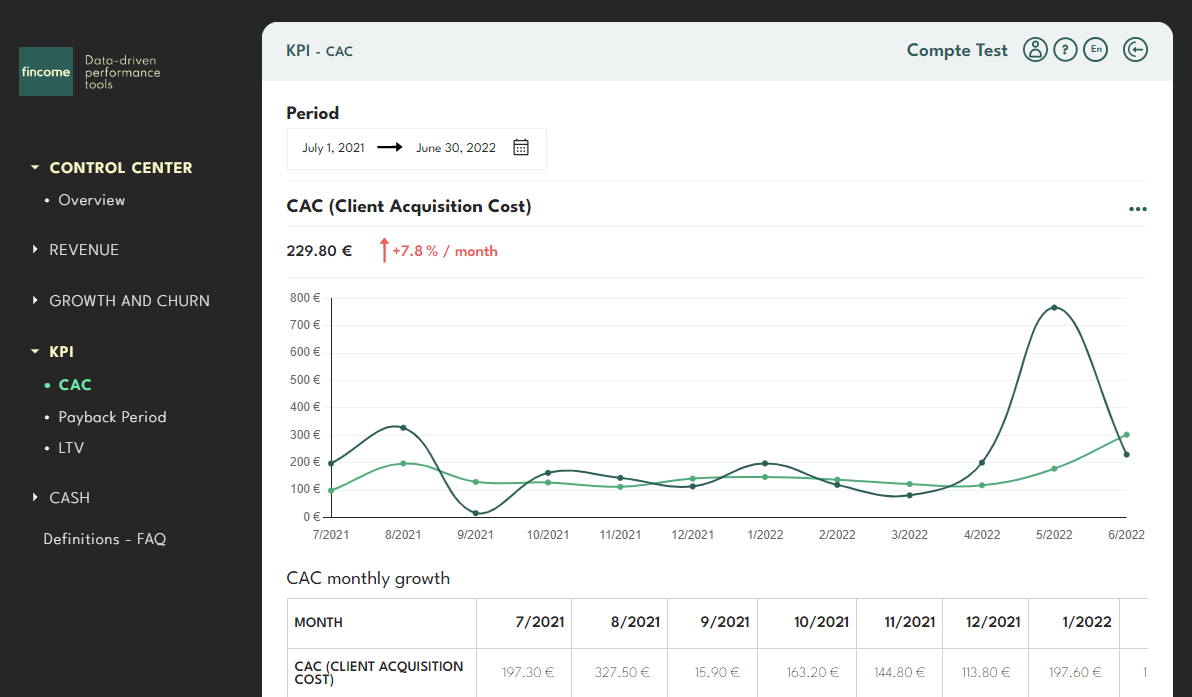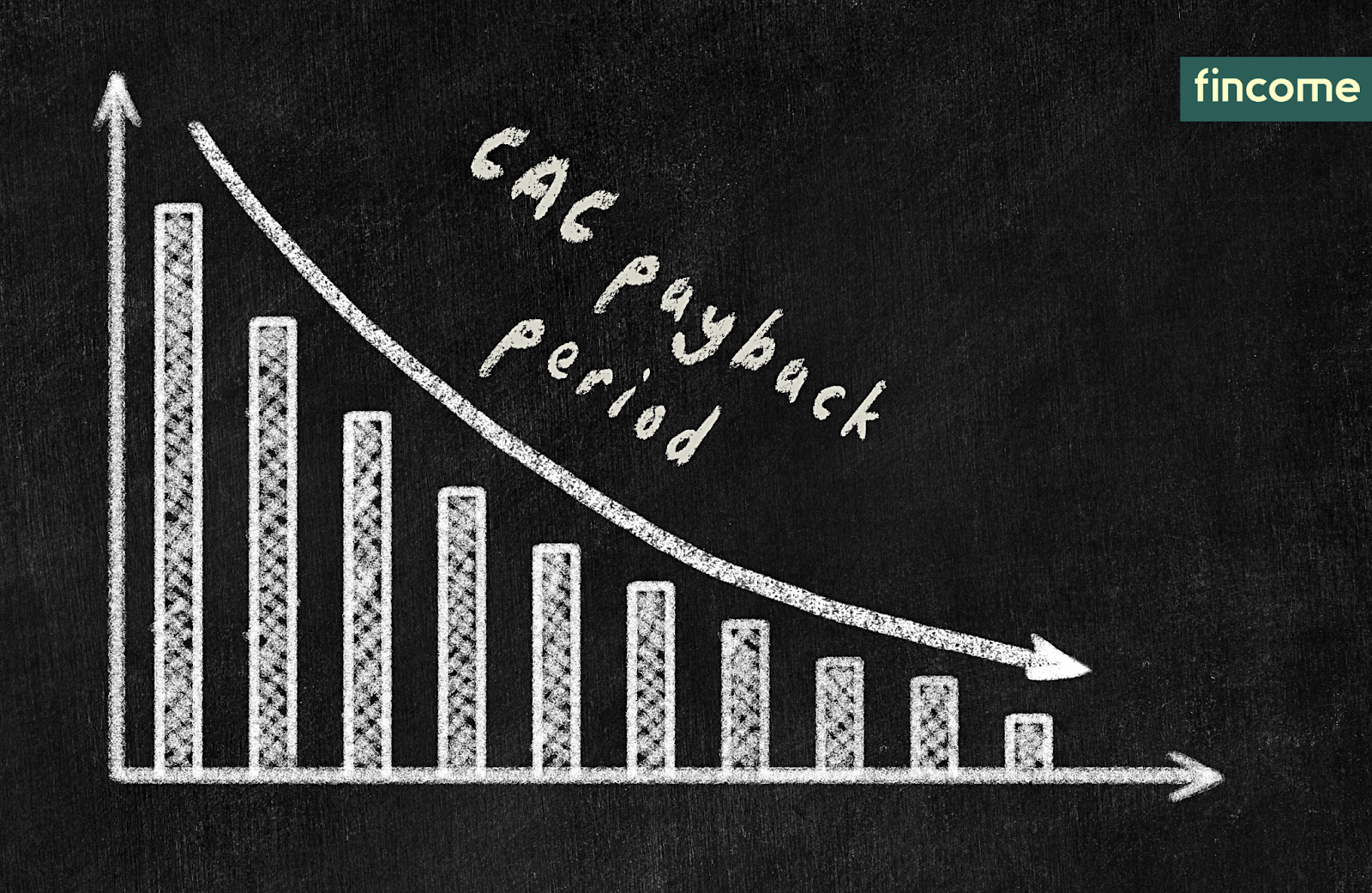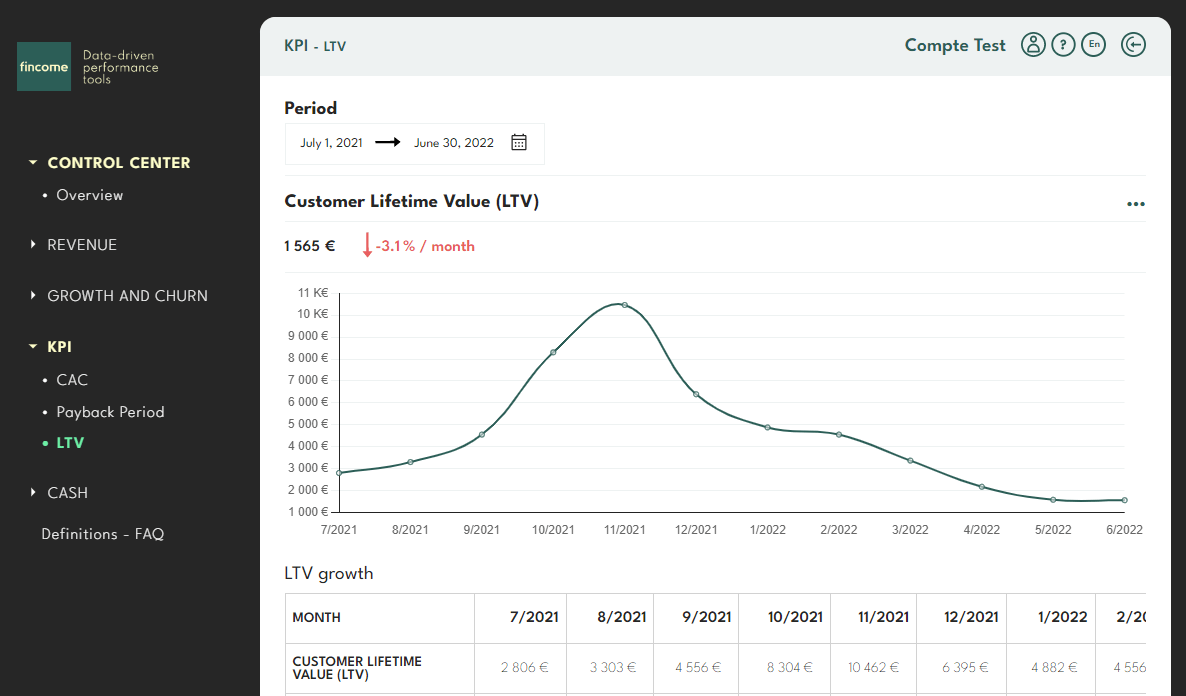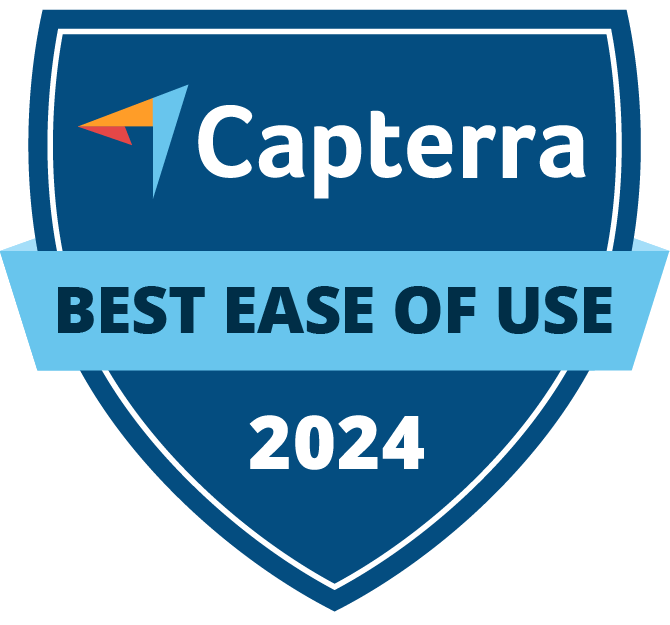How to Optimize Customer Acquisition Cost (CAC) for SaaS


In the SaaS industry, Customer Acquisition Cost (CAC) is one of the most important metrics for measuring growth efficiency and long-term profitability. CAC reflects how much it costs to acquire a new customer and directly impacts your company’s ability to scale sustainably.
A healthy CAC means acquiring customers at a cost that allows for strong profit margins and consistent growth. On the other hand, an excessively high CAC can strain cash flow, reduce profitability, and make it harder to attract investors.
Understanding and optimizing CAC requires a strategic approach that includes tracking the right expenses, analyzing performance across different acquisition channels, and improving customer lifetime value (CLV). In this article, we’ll explain how to calculate CAC accurately, why it matters for SaaS businesses, and share actionable strategies for improving it.
CAC: what it is, how it’s calculated, and what it’s for
CAC acts as the driving force behind growth for startups, including SaaS and e-commerce companies.
Startups spend heavily on sales and marketing to acquire new customers, which can represent a significant portion of their total costs. The goal of these costs is to generate revenue. Controlling CAC is essential for optimizing growth without overspending.
What is CAC for SaaS?
CAC measures the total sales and marketing spend required to acquire a new customer.
It's a fundamental KPI for SaaS startups, directly affecting profitability and growth potential. Tracking CAC regularly allows businesses to evaluate the profitability of their marketing investments and adjust strategies if necessary.
What are the components of CAC?
The CAC calculation formula can be summarized as follows:
CAC = Total sales and marketing expenditure ÷ Number of new customers
To calculate CAC accurately, it's essential to understand precisely what expenses should be included. CAC is not just about direct ad spending — it reflects the broader cost of all activities attracting and converting new customers. Here's a breakdown of the key components and why they matter:
- Sales & Marketing Salaries (including management costs): This includes the salaries of sales reps, marketing teams, and managers. Even if you’re not directly paying for an ad, these teams' work contributes to customer acquisition.
- Paid Advertising (Google Ads, Facebook Ads, etc.): Paid campaigns are one of the most straightforward CAC components. Every dollar spent acquiring clicks or impressions through platforms like Google, Facebook, LinkedIn, or others should be factored in.
- SEO Expenses (Content Creation, Technical SEO): Search engine optimization (SEO) is critical for driving organic traffic. Costs related to creating blog posts, landing pages, and optimizing your website to rank higher on search engines should be counted toward CAC, even though they may not result in immediate conversions. Investing in SEO can drive organic traffic and long-term conversions, reducing reliance on paid ads.
- Travel, Meals, and Entertainment for Sales Teams: If your sales team travels to meet with potential clients or hosts events to build relationships, these expenses contribute to customer acquisition and should be included in CAC calculations.
- Trade Fairs and Face-to-Face Events: Attending trade fairs, industry conferences and networking events can generate leads and increase brand visibility. The event registration, booth setup, and travel costs should be part of your CAC.
- Customer Appreciation Gifts: Sending thank-you notes, gifts, or other incentives to prospects or newly acquired customers can strengthen relationships and increase the likelihood of closing deals — making it part of the acquisition cost.
- SaaS Tools and Subscriptions for Commercial Purposes: Tools like CRM platforms (e.g., Salesforce), email marketing services, and sales automation tools help manage leads and optimize sales funnels. Even though they’re operational expenses, they directly support customer acquisition and should be included in CAC.
- Sponsorship and Affiliate Costs: Paying influencers, affiliates, or sponsors to promote your product or service is a direct customer acquisition expense. These fees should be factored into your CAC since they help bring in new leads.
Why calculate CAC ?
CAC is a major driver of profitability for SaaS businesses. If CAC is too high compared to revenue, your business model becomes unsustainable, and you’ll lose money with every customer you acquire.
It’s also a crucial KPI for measuring the effectiveness of each acquisition channel (we’ll cover this more in the next section).
Investors pay close attention to CAC. Raising funds and properly valuing your SaaS business becomes much more complicated if you can't accurately calculate it.
💡 Article: Top tips for communicating with SaaS investors
CAC is also used to compare the return on investment (ROI) across different marketing campaigns and channels, making it a valuable tool for guiding budgets and sales efforts. For example, should you invest in cold emailing or Facebook Ads? CAC analysis will help you better allocate your spending.
Understanding and Analyzing CAC

Measuring Customer Acquisition Cost is just the starting point. To get the most value from this metric, you must analyze it closely - by period, channel, and campaign - and compare it to your budget and customer lifetime value (CLV).
Analyze CAC with CLV
Lifetime Value (LTV) measures the total revenue expected from a customer over their lifetime.
💡 To assess this metric, see our article How to calculate KPIs for SaaS companies?
Once you have both CAC and CLV, you can calculate the LTV/CAC ratio — a key metric that reflects how efficiently you are acquiring customers.
According to Forrester Research, an LTV/CAC ratio of 3:1 is considered optimal for SaaS businesses. This means that, over their lifetime, a customer should generate at least three times the cost of acquiring them.
If the ratio is below 3:1, it means your acquisition costs are too high or your customers' lifetime value is too low—both of which can hurt long-term profitability.
Measuring acquisition costs by segment or channel
The more segmented the CAC calculation, the more accurately and efficiently it can be analyzed. CAC should be calculated for each acquisition channel (e.g., SEO, paid search, social media) to understand which channels are performing well and which are draining your budget.
For example:
- CAC for SEO traffic might be $50
- CAC for Google Ads might be $150
If organic search generates lower CAC and higher conversions, reallocating the budget from paid ads to SEO could increase overall profitability. First Page Sage reports that the average CAC for the B2B SaaS industry is $239.
Compare CAC against defined objectives and budgets
Analyzing customer acquisition costs also means comparing them to the budget. Overspending — especially during a growth phase — can quickly lead to cash flow issues.
💡 Article: 3 common mistakes that kill SaaS startups
By setting a budget for each campaign and defining a CAC target, a startup can better control spending and track progress toward goals, making it easier to spot and correct deviations.
The CAC payback period

The CAC payback period measures how long it takes to recover customer acquisition costs through revenue. According to ScaleXP, a short CAC payback period (12 months or less) reflects higher profitability and better cash flow.
💡 CAC Payback Period = CAC ÷ ARPA (Average Revenue Per Account)
This ROI (return on investment) calculation tells you how many months a customer subscription needs to run before you’ve covered the acquisition cost.
For example:
- CAC = $300
- ARPA = $100/month
- CAC payback period = 3 months
Keep in mind that this ratio should be analyzed alongside LTV. The longer a customer maintains their subscription, the lower the risk of extending the CAC payback period.
{{discover}}
Levers for optimizing CAC or LTV/CAC ratio
Efficient sales spending means keeping costs under control while maximizing a customer's lifetime revenue.
The LTV/CAC ratio is a key metric for SaaS businesses — improving it directly increases profitability and scalability. Here’s how you can optimize it:
Levers for optimizing CAC
There are several ways to increase the number of new customers and reduce customer acquisition costs. Here’s a list of key actions to consider:
- Improve conversion rates by segmenting your campaigns and tailoring messages to match each target audience better. According to Thalox, effective lead segmentation drives higher conversion rates and better customer experiences.
- Set up referral or sponsorship programs to encourage customer growth. (However, these programs have added costs.)
You can also lower CAC by cutting back on spending. Here are some areas to consider:
- Invest in SEO to drive organic traffic and long-term conversions, reducing your reliance on paid ads.
- Drop underperforming campaigns and shift the budget to the ones delivering better results.
Optimizing the LTV/CAC ratio

Retaining customers costs less than acquiring them. To improve retention, the two main ways to optimize the LTV/CAC ratio are:
- Reducing Churn – According to McKinsey, SaaS companies with the highest revenues succeed by investing more in customer success initiatives to reduce churn. This can include:
- Providing better onboarding experiences ensures customers quickly see your product's value.
- Offering responsive customer support and proactive outreach to address issues before they escalate.
- Regularly update and improve your product based on customer feedback.
- Creating a customer loyalty program to incentivize long-term use.
- Increasing Upsell – Encourage existing customers to upgrade or purchase additional features by:
- Using data to identify which customers will most likely benefit from an upsell.
- Offering targeted promotions and discounts on premium features.
- Adding value through feature expansion or integrations that align with customer needs.
- Introducing tiered pricing plans that make upgrading more attractive.
By improving the user experience, the company can reduce its churn rate, which in turn increases LTV and the LTV/CAC ratio.
Maximizing perceived customer value is another avenue worth exploring. Customer reviews offer valuable insights into refining your product and adding useful features, which can increase revenue and LTV. Strong branding also enhances perceived value, helping position your product more competitively.
Conclusion
Optimizing CAC is an ongoing process that evolves as your SaaS business grows. Understanding key metrics such as CAC and LTV, analyzing the performance of different acquisition channels, and adjusting your strategies accordingly will help drive sustainable growth and improve profitability.
The most successful SaaS companies continually refine their customer acquisition strategies, balancing growth with cost efficiency to maximize long-term profitability. Regularly reviewing CAC performance, adapting to market changes, and improving customer retention are essential for scaling your business sustainably.
Step 1: Calculate your current CAC and LTV to understand your acquisition efficiency.
Step 2: Identify your best and worst-performing acquisition channels. Double down on high-performing channels and adjust or eliminate underperforming ones.
Step 3: Implement at least one new strategy from this guide — such as improving customer onboarding, refining paid ad targeting, or enhancing customer support.
Finding it hard to track CAC and other key performance indicators? Request a free demo of how our solutions can help you measure and improve customer acquisition costs more effectively.
{{newsletter}}


Discover Fincome!

Frequently Asked Questions
Expense Tracking:
Fincome is a SaaS revenue management platform designed specifically for companies with recurring revenue models (any business selling subscriptions).
Fincome automates the tracking and management of your revenues and associated KPIs (churn, LTV, CAC, etc.) in real time, without the need for a data team or manual processing, thanks to direct integrations with your billing systems and ERP.
Unlike generic BI tools, Fincome offers a turnkey, intuitive solution tailored to the specific needs of subscription-based businesses, enabling seamless collaboration across your finance, GTM, and CSM teams.
Fincome is built exclusively for companies with recurring revenue models, meaning those that track MRR or ARR, such as:
• Software publishers (SaaS)
• Media companies
• Mobile apps
• Any other B2B or B2C subscription business looking to professionalize revenue management
Fincome supports organizations at every stage of growth, from startups to mid-market and large international enterprises.
With Fincome, you gain access to a full suite of modules:
✅ Revenue: detailed ARR/MRR breakdown, cohort analysis, detection of billing errors or omissions, revenue recognition and deferred revenue (PCA)
✅ Growth: analysis of ARR movements (new business, expansion, churn, reactivation), identification of growth drivers
✅ Unit Economics: LTV, CAC, and LTV/CAC analysis by segment, channel, or geography to optimize margins
✅ Retention: deep cohort analyses, identification of key retention drivers
✅ Renewals: future MRR projections, opportunity forecasting, and churn risk reduction
✅ Forecasting: revenue growth scenario modeling to better inform strategic decisions
Fincome is the only turnkey platform built specifically for recurring revenue businesses that combines:
✅ A complete, reliable view of your recurring revenues (MRR, ARR, churn, LTV, CAC, cohorts, renewals, revenue recognition, deferred revenue)
✅ Fully customizable, automated, shareable reports powered by AI, delivering actionable insights to guide your strategic decisions
✅ Expert support to help structure and interpret your analyses, without needing to build an internal data team
✅ The ability to generate future growth scenarios, compare them side by side, and track actual vs. forecasted performance, all in real time
Unlike traditional BI tools, which require you to build and maintain your own metrics (often consuming internal resources just to produce static data visualizations), Fincome transforms your SaaS metrics into concrete, actionable recommendations — helping you move faster, with more impact and operational efficiency.
Yes! If you use an unlisted or in-house billing system, no problem — you can easily import your billing data via Excel or push it through our public API. You can access our public API documentation here.
With Fincome, you can:
✅ Reduce up to 90% of the time spent calculating and reporting your KPIs
✅ Make faster, more accurate strategic decisions
✅ Recover up to 5% of lost revenue by detecting errors or omissions
✅ Cut the risk of manual spreadsheet errors by 80%
Absolutely. Data security is at the heart of what we do. Fincome is SOC 2 Type I certified, ensuring a high level of data security and protection.
Your data is collected exclusively via read-only APIs and hosted on secure servers located in France. We never share your data with third parties without your consent.
For a detailed review of our security practices, please visit our dedicated security page.
At Fincome, customer success is a core priority. We guide you from the very start — structuring your data, training your teams, and optimizing your use of the platform to deliver value quickly.
Our team remains by your side to answer strategic or technical questions, share best practices, and help you get the most out of your analyses.
Simply request a demo on our website. We’ll walk you through the platform, assess your needs, and guide you through a smooth deployment.
Most deployments and team trainings take no more than two weeks to get fully up and running.
👉 Request a demo
Income Analytics:
Lorem ipsum dolor sit amet consectetur adipiscing elit etiam vehicula. Etiam vehicula condimentum nunc, a semper elit luctus id. Duis fringilla enim non neque aliquet.
Lorem ipsum dolor sit amet consectetur adipiscing elit etiam vehicula. Etiam vehicula condimentum nunc, a semper elit luctus id. Duis fringilla enim non neque aliquet.
Lorem ipsum dolor sit amet consectetur adipiscing elit etiam vehicula. Etiam vehicula condimentum nunc, a semper elit luctus id. Duis fringilla enim non neque aliquet.
Budget Management:
Lorem ipsum dolor sit amet consectetur adipiscing elit etiam vehicula. Etiam vehicula condimentum nunc, a semper elit luctus id. Duis fringilla enim non neque aliquet.
Lorem ipsum dolor sit amet consectetur adipiscing elit etiam vehicula. Etiam vehicula condimentum nunc, a semper elit luctus id. Duis fringilla enim non neque aliquet.
Lorem ipsum dolor sit amet consectetur adipiscing elit etiam vehicula. Etiam vehicula condimentum nunc, a semper elit luctus id. Duis fringilla enim non neque aliquet.
Wealth Management:
Lorem ipsum dolor sit amet consectetur adipiscing elit etiam vehicula. Etiam vehicula condimentum nunc, a semper elit luctus id. Duis fringilla enim non neque aliquet.
Lorem ipsum dolor sit amet consectetur adipiscing elit etiam vehicula. Etiam vehicula condimentum nunc, a semper elit luctus id. Duis fringilla enim non neque aliquet.
Lorem ipsum dolor sit amet consectetur adipiscing elit etiam vehicula. Etiam vehicula condimentum nunc, a semper elit luctus id. Duis fringilla enim non neque aliquet.






